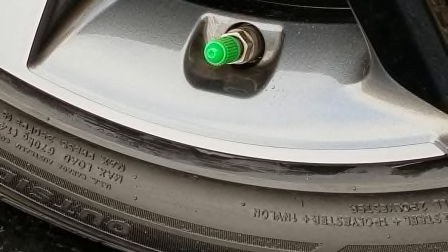How to Save Money When Buying Replacement Tires
Shoppers reveal what they paid and how they saved in CR's exclusive survey

Tires are increasingly expensive, and choosing the right one for your car and budget can be challenging. We have seen prices increase for our extensive test program since the pandemic. And results from a recent survey of thousands of Consumer Reports members who reported on tire purchases show those who bought tires in 2022 paid an estimated price of $194 per tire, up significantly from our 2020 survey, when the median price was $167. The cost for installation rose slightly, from $25 to $27. (See the full tire retailer ratings.)
What Drives Tire Purchases
Most buyers (55 percent) shopped when their current tires were worn, but a significant 18 percent bought new tires because they experienced problems (flat, noise, vibration, tread separation) or the tires had premature/irregular wear (17 percent). There are a few lessons to be gleaned from these findings.
Ideally, tires will serve for several years. To increase the odds that you truly get your money’s worth, look at the treadwear estimates in our ratings. These data-derived predictions for all-season and all-season performance tires based on our rigorous vehicle treadwear test, in which we run tires around the clock, over 1,000 miles a day. Car and truck tires are run to 16,000 miles, and based on the measured wear, we predict their service life.
To ensure you get the most from your tires, we recommend checking and adjusting the tire pressure monthly. All tires lose a little pressure over time, and outside temperatures impact air density and consequently tire pressure. Notably, pressure drops with temps, making it particularly important to be diligent in cold months. Proper inflation will help the tires to wear evenly, while bolstering safety.
The other key maintenance chore is to rotate the tires every 5,000 to 7,500 miles. This also helps them to wear evenly, making up for the extra wear the front tires experience and compensating for minor suspension alignment issues.
Surveyed CR members tend to stay on a good rotation schedule. A third (33 percent) say they have it done every 5,000 miles, a fifth (20 percent) state they have it done with each oil change, and 13 percent report that they diligently follow the owner’s manual directions. But too many are less disciplined, likely accounting for the previous figures on owners experiencing problems that led to tire replacement—likely before it would have otherwise been necessary. A disappointing 9 percent say they never rotated the tires. Just like with your personal health, preventative measures add longevity and ultimately save money.
Time to Shop
In choosing their next tires, CR members prioritize handling (76 percent), wet grip (74 percent), treadwear (67 percent), and ride comfort (58 percent). Despite the tough economy, these shoppers clearly focused on performance factors over price, which was considered very important to just 40 percent of survey respondents.
Ultimately price is just one element of value. With tires, value can be understood by looking beyond price to the Overall Score, which reflects the performance and accounts for the predicted treadlife. Often we find that it is worth spending extra on a higher-rated tire. Just make sure you take good care of your tires to truly get your money’s worth.
Michelin is by far the most purchased tire brand among CR members. It’s no wonder: Michelin holds the top position in many of the categories we test. Michelin tires often cost more, with prices above many other household names, but the added cost can often be justified when comparing track performance and projected treadwear. As further proof, Michelin earned a much-above-average rating for owner satisfaction in each of the four tire types in the survey. (Read more about satisfaction with tire retailers.)
How to Save on Tires
In general, members were satisfied with tire retailers. Over half of the members (56 percent) who took our survey said considering all factors, they were completely satisfied with their tire purchase experience, and 33 percent were very satisfied.
The best retailers often have compelling tire prices and high installation quality. To get the best price, you want to start shopping before there is an urgent need to replace the tires for several reasons.
This approach allows time to check prices at your preferred retailers and time to wait for rebates from tire makers. These are fairly common for buying sets of four, and they can be readily found on the websites for tire companies and tire retailers. If there isn’t a rebate available now, try to wait until the beginning of the next month, as they do pop up with great regularity.
Another reason to have some flexibility on timing is because your local store may not have the specific model and size in stock. This was always a possibility, but in our experience, the need to order tires has been more common since the pandemic.
When you’re ready to buy, try negotiating the price from your local store. The retailer may price match, if you find a lower price elsewhere. The majority of survey respondents (87 percent) did not negotiate, but among those who did, 64 percent were successful at getting a better deal. The average savings for these savvy shoppers was $100 for a full set. It is worth trying.
Be sure to ask about free perks. Most members (80 percent) who purchased or installed tires at a retailer received at least one free perk or service. Among all members who received one or more such perks, about half got free tire balancing (51 percent) or free tire rotation (49 percent). Almost as many got free tire mounting (46 percent), while more than a third got free disposal of the old tires (35 percent). In particular, free rotation can bring significant savings—if you return to the store regularly to take advantage of this service.
What About Road-Hazard Protection?
A road-hazard warranty—protection that typically provides a prorated replacement for tires damaged before their traditional tread life has expired—is another fairly common perk. Almost half of the CR members (46 percent) who had road-hazard/tire service warranties received these protections free from the tire makers. For models without this protection, it may be a free perk from the retailer. Otherwise, it can be added like an extended warranty at point of purchase.
Among those who actually purchased a road-hazard/service contract warranty, the median cost for a set of four was $61 for all-terrain, $51 for all-season, $50 for all-weather, and $47 for snow/winter tires. (We do not have sufficient sample size to calculate the cost for summer tires.) The median cost for adding this protection was $51, with prices spanning from $48 for Bridgestone to $60 for Continental and Yokohama.
A little more than a quarter (26 percent) of road-hazard/service contract warranties had actually been used when members were surveyed.
“Road-hazard protection is often worth the peace of mind,” says Gordon Gingras, automotive engineer. “This is especially true on expensive tires, tires with short sidewalls that are prone to damage, and if you have a history of getting flat tires."
Bottom Line
Start shopping for tires by identifying models that deliver on the safety-related attributes that mean the most to you, such as wet braking grip, winter traction, and resistance to hydroplaning (when water gets between the tire and the road). Then focus on getting a good deal from a reputable dealer. There are often discounts available from the tire manufacturer and tire retailer websites, most often in the form of savings on a complete set. And remember, it can’t hurt to try negotiating.
The latest tire retailer satisfaction ratings help to supplement our extensive tire-testing results, allowing CR members to optimize their tire-buying experience.




















